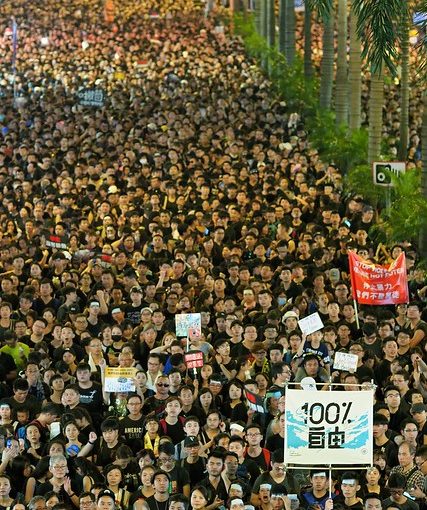Hong Kong in the summer of 2019 really is a thorny problem for Beijing. All things considered, it looks like there is no “win” for Beijing, only a “not lose.”
A “Perfect Storm”
A perfect storm of conditions is coming together to make an almost impossible situation in which the Chinese government cannot get a positive outcome. The Hong Kong government has been tasked with dealing with the massive demonstrations opposing the now-defunct extradition bill. The kidnapping of anti-Beijing booksellers in the not-so-distant past gave demonstrators just the ammunition they needed for their protest, as it proved to them that the true purpose of the bill was not to extradite criminals to face justice, but to smother dissent in Hong Kong.
This has been a near impossible situation to deal with for the government of the SAR considering that university students are on holiday and out in full force, and that the world is watching via international media. While there were accusations of excessive force, the demonstrators did enter and vandalize the Legislative Council Building despite police presence.
As of mid-July 2019, protests continue. The second round of protests have been against mainland traders who buy up huge amounts of goods in Hong Kong for resale on the mainland which drives up inflation in Hong Kong. Police and protesters scuffled at a shopping mall and injuries were reported.
Demands from the protesters, in addition to the permanent scrapping of the extradition bill, now include an investigation into police brutality and the resignation of Chief Executive Carrie Lam.
The Use of Minimal Force
At present, it appears that Bejing’s decision is to continue to let the Hong Kong government handle the situation. The use of excessive force by the SAR or the Beijing government would damage the “soft power” that the PRC has been developing for decades culminating in the “Belt and Road” initiative.
The specter of the CCP’s handling of the 1989 Tian An Men Square incident also hangs over the Chinese government. Moreover, those “on the fence” in Taiwan regarding re-unification might be pushed to the pro-independence side if they were to see the PRC clamp down.
And the “no win” situation is just not for the government of the PRC.The protesters who are acting in such a way to preserve the freedom of Hong Kong under the One Country-Two Systems arrangement might just be putting an end to it.
Beijing’s Red Line
China’s long-term strategy is not yet clear. In the short term, the strategy is not to use excessive force. However there is a point where protest becomes anarchy. If anarchy were to ensue, then the PLA would be called in to maintain order. Once order had been restored, those “freedoms” that the protesters were fighting so hard to preserve might be lost forever.
No one knows where the red line is with the powers in Beijing and we are not privy to the thinking of the CCP. But be sure, there is a red line. When the passions of the protesters are aroused, it is unlikely that long-term thinking will prevail, and it is highly likely that anarchy will ensue. When anarchy does ensue, the CCP and PLA will act, and act decisively.
The above outcomes are not good for Hong Kong, and ultimately not good for China. But history has a way of being history, and in Hong Kong and other places around the world we can see history unfold from the comfort of our own homes on big-screen TVs.
What do you think about this matter? Please let us know.
photo: Etan Liam via flickr
 日本語
日本語 English
English 中国語
中国語